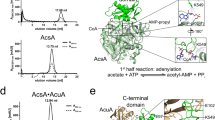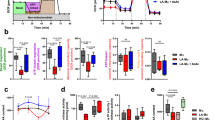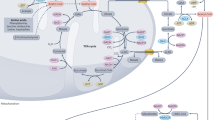Abstract
THE oxidation of acetate by mammalian tissue in vitro has been demonstrated; but comparatively little is known concerning the pathway of its oxidation or the possibility of its oxidation being coupled with phosphorylation. Recently Barcroft, McAnally and Phillipson1 showed that acetate maintained the beat of the perfused rabbit's heart. Their demonstration suggests the ability of acetate to furnish energy for the maintenance of function in this tissue.
This is a preview of subscription content, access via your institution
Access options
Subscribe to this journal
Receive 51 print issues and online access
$199.00 per year
only $3.90 per issue
Buy this article
- Purchase on SpringerLink
- Instant access to full article PDF
Prices may be subject to local taxes which are calculated during checkout
Similar content being viewed by others
References
Barcroft, J. McAnally, R., and Phillipson, A., NATURE, 151, 304 (1943).
Lardy, H. A., and Phillips, P. H., Amer. J. Physiol., 133, 602 (1941); 134, 542 (1941).
Lardy, H. A., and Phillips, P. H., J. Biol. Chem., 149, 177 (1943).
Lardy, H. A., and Phillips, P. H., Amer. J. Physiol., 133, 741 (1943).
Lardy, H. A., and Phillips, P. H., J. Biol. Chem., 143, 333 (1943).
Breusch, F. L., Science, 97, 490 (1943).
Author information
Authors and Affiliations
Rights and permissions
About this article
Cite this article
LARDY, H., PHILLIPS, P. Acetate Utilization for Maintenance of Motility of Bull Spermatozoa. Nature 153, 168–169 (1944). https://doi.org/10.1038/153168b0
Issue date:
DOI: https://doi.org/10.1038/153168b0



